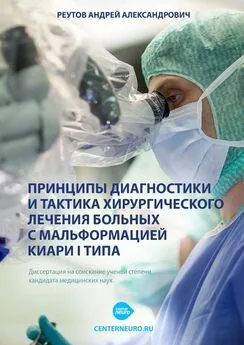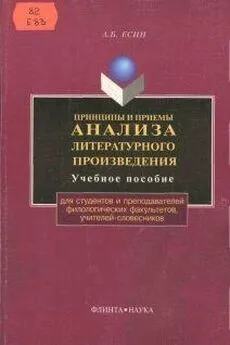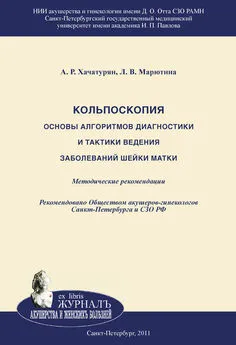Андрей Реутов - Принципы диагностики и тактика хирургического лечения больных с мальформацией Киари I типа
- Название:Принципы диагностики и тактика хирургического лечения больных с мальформацией Киари I типа
- Автор:
- Жанр:
- Издательство:неизвестно
- Год:2017
- ISBN:978-5-4483-6374-0
- Рейтинг:
- Избранное:Добавить в избранное
-
Отзывы:
-
Ваша оценка:
Андрей Реутов - Принципы диагностики и тактика хирургического лечения больных с мальформацией Киари I типа краткое содержание
Принципы диагностики и тактика хирургического лечения больных с мальформацией Киари I типа - читать онлайн бесплатно ознакомительный отрывок
Интервал:
Закладка:
141. Nishikawa M., Ohata K., Baba M., Terakawa Y., Hara M. Chiari I malformation associated with ventral compression and instability: one-stage posterior decompression and fusion with a new instrumentation technique. //Neurosurgery — 2004;54:1430—1434; discussion 1434—1435.
142. Nishikawa M., Sakamoto H., Hakuba A., Nakanishi N., Inoue Y. Pathogenesis of Chiari malformation: a morphometric study of the posterior cranial fossa. //J Neurosurg — 1997;86:40—47.
143. Noudel R., Jovenin N., Eap C., Scherpereel B., Pierot L., Rousseaux P. Incidence of basioccipital hypoplasia in Chiari malformation type I: comparative morphometric study of the posterior cranial fossa. Clinical article. //J Neurosurg — 2009;111:1046—1052.
144. Novegno F., Caldarelli M., Massa A., et al. The natural history of the Chiari Type I anomaly. //J Neurosurg Pediatr — 2008;2:179—187.
145. O’connor S., Du Boulay G., Logue V. The normal position of the cerebellar tonsils as demonstrated by myelography. //J Neurosurg — 1973;39:387—389.
146. O’rahilly R., Muller F., Meyer D.B. The human vertebral column at the end of the embryonic period proper. 2. The occipitocervical region. //J Anat — 1983;136:181—195.
147. Oldfield E.H. Cerebellar tonsils and syringomyelia. //J Neurosurg — 2002;97:1009—1010; discussion 1010.
148. Oldfield E.H., Muraszko K., Shawker T.H., Patronas N.J. Pathophysiology of syringomyelia associated with Chiari I malformation of the cerebellar tonsils. Implications for diagnosis and treatment. //J Neurosurg — 1994;80:3—15.
149. Ono A., Suetsuna F., Ueyama K., et al. Surgical outcomes in adult patients with syringomyelia associated with Chiari malformation type I: the relationship between scoliosis and neurological findings. //J Neurosurg Spine — 2007;6:216—221.
150. Pang D., Dias M.S. Cervical myelomeningoceles. //Neurosurgery — 1993;33:363—372; discussion 372—363.
151. Papanastassiou A.M., Schwartz R.B., Friedlander R.M. Chiari I malformation as a cause of trigeminal neuralgia: case report. //Neurosurgery — 2008;63:E614—615; discussion E615.
152. Patten B.M. Embryological stages in the establishing of myeloschisis with spina bifida. //Am J Anat — 1953;93:365—395.
153. Paul K.S., Lye R.H., Strang F.A., Dutton J. Arnold-Chiari malformation. Review of 71 cases. //J Neurosurg — 1983;58:183—187.
154. Payner T.D., Prenger E., Berger T.S., Crone K.R. Acquired Chiari malformations: incidence, diagnosis, and management. //Neurosurgery — 1994;34:429—434; discussion 434.
155. Peach B. Arnold-Chiari Malformation: Anatomic Features of 20 Cases. //Arch Neurol — 1965;12:613—621.
156. Peach B. The Arnold-Chiari Malformation; Morphogenesis. //Arch Neurol — 1965;12:527—535.
157. Penfield W., Coburn, D. F . Arnold-Chiari malformation and its operative treatment. //Archives of Neurology & Psychiatry (Chicago) — 1938;40:328—336.
158. Perrini P., Benedetto N., Tenenbaum R., Di Lorenzo N. Extra-arachnoidal cranio-cervical decompression for syringomyelia associated with Chiari I malformation in adults: technique assessment. //Acta Neurochir (Wien) — 2007;149:1015—1022; discussion 1022—1013.
159. Pillay P.K., Awad I.A., Little J.R., Hahn J.F. Symptomatic Chiari malformation in adults: a new classification based on magnetic resonance imaging with clinical and prognostic significance. //Neurosurgery — 1991;28:639—645.
160. Quigley M.F., Iskandar B., Quigley M.E., Nicosia M., Haughton V. Cerebrospinal fluid flow in foramen magnum: temporal and spatial patterns at MR imaging in volunteers and in patients with Chiari I malformation. //Radiology — 2004;232:229—236.
161. Raftopoulos C., Sanchez A., Matos C., Baleriaux D., Bank W.O., Brotchi J. Hydrosyringomyelia-Chiari I complex. Prospective evaluation of a modified foramen magnum decompression procedure: preliminary results. //Surg Neurol — 1993;39:163—169.
162. Robenek M., Kloska S.P., Husstedt I.W. Evidence of familial syringomyelia in discordant association with Chiari type I malformation. //Eur J Neurol — 2006;13:783—785.
163. Russell D.S., Donald C. The mechanism of internal hydrocephalus in spina bifida. //Brain — 1935;58:203—215.
164. Sahuquillo J., Rubio E., Poca M.A., Rovira A., Rodriguez-Baeza A., Cervera C. Posterior fossa reconstruction: a surgical technique for the treatment of Chiari I malformation and Chiari I/syringomyelia complex — preliminary results and magnetic resonance imaging quantitative assessment of hindbrain migration. //Neurosurgery — 1994;35:874—884; discussion 884—875.
165. Sakamoto H., Nishikawa M., Hakuba A., et al. Expansive suboccipital cranioplasty for the treatment of syringomyelia associated with Chiari malformation. //Acta Neurochir (Wien) — 1999;141:949—960; discussion 960—941.
166. Samii M., Klekamp J. Surgical results of 100 intramedullary tumors in relation to accompanying syringomyelia. //Neurosurgery — 1994;35:865—873; discussion 873.
167. Santarius T., D’sousa A.R., Zeitoun H.M., Cruickshank G., Morgan D.W. Audit of headache following resection of acoustic neuroma using three different techniques of suboccipital approach. //Rev Laryngol Otol Rhinol (Bord) — 2000;121:75—78.
168. Schijman E., Steinbok P. International survey on the management of Chiari I malformation and syringomyelia. //Childs Nerv Syst — 2004;20:341—348.
169. Schwalbe E., Gredig M. Ueber Entwicklungsstörungen des Kleinhirns, Hirnstamms und Halsmarks bei Spina bifida (Arnold’sche und Chiari’sche Missbildung). //Beitrag zur pathologischen Anatomie — 1907;40:132—194.
170. Sindou M., Chavez-Machuca J., Hashish H. Cranio-cervical decompression for Chiari type I-malformation, adding extreme lateral foramen magnum opening and expansile duroplasty with arachnoid preservation. Technique and long-term functional results in 44 consecutive adult cases — comparison with literature data. //Acta Neurochir (Wien) — 2002;144:1005—1019.
171. Sindou M., Gimbert E. Decompression for Chiari type I-malformation (with or without syringomyelia) by extreme lateral foramen magnum opening and expansile duraplasty with arachnoid preservation: comparison with other technical modalities (Literature review). //Adv Tech Stand Neurosurg — 2009;34:85—110.
172. Siomin V., Cinalli G., Grotenhuis A., et al. Endoscopic third ventriculostomy in patients with cerebrospinal fluid infection and/or hemorrhage. //J Neurosurg — 2002;97:519—524.
173. Speer M.C., George T.M., Enterline D.S., Franklin A., Wolpert C.M., Milhorat T.H. A genetic hypothesis for Chiari I malformation with or without syringomyelia. //Neurosurg Focus — 2000;8:E12.
174. Stoodley M.A., Gutschmidt B., Jones N.R. Cerebrospinal fluid flow in an animal model of noncommunicating syringomyelia. //Neurosurgery — 1999;44:1065—1075; discussion 1075—1066.
175. Stovner L.J., Bergan U., Nilsen G., Sjaastad O. Posterior cranial fossa dimensions in the Chiari I malformation: relation to pathogenesis and clinical presentation. //Neuroradiology — 1993;35:113—118.
176. Takayasu M., Takagi T., Hara M., Anzai M. A simple technique for expansive suboccipital cranioplasty following foramen magnum decompression for the treatment of syringomyelia associated with Chiari I malformation. //Neurosurg Rev — 2004;27:173—177.
177. Tognetti F., Calbucci F. Syringomyelia: syringo-subarachnoid shunt versus posterior fossa decompression. //Acta Neurochir (Wien) — 1993;123:196—197.
178. Tokuno H., Hakuba A., Suzuki T., Nishimura S. Operative treatment of Chiari malformation with syringomyelia. //Acta Neurochir Suppl (Wien) — 1988;43:22—25.
179. Tominaga T., Koshu K., Ogawa A., Yoshimoto T. Transoral decompression evaluated by cine-mode magnetic resonance imaging: a case of basilar impression accompanied by Chiari malformation. //Neurosurgery — 1991;28:883—885.
180. Tubbs R.S., Elton S., Grabb P., Dockery S.E., Bartolucci A.A., Oakes W.J. Analysis of the posterior fossa in children with the Chiari 0 malformation. //Neurosurgery — 2001;48:1050—1054; discussion 1054—1055.
181. Tubbs R.S., Mcgirt M.J., Oakes W.J. Surgical experience in 130 pediatric patients with Chiari I malformations. //J Neurosurg — 2003;99:291—296.
182. Tubbs R.S., Oakes W.J. Treatment and management of the Chiari II malformation: an evidence-based review of the literature. //Childs Nerv Syst — 2004;20:375—381.
183. Tubbs R.S., Smyth M.D., Wellons J.C., 3rd, Oakes W.J. Arachnoid veils and the Chiari I malformation. //J Neurosurg — 2004;100:465—467.
184. Tubbs R.S., Wellons J.C., 3rd, Blount J.P., Oakes W.J. Posterior atlantooccipital membrane for duraplasty. Technical note. //J Neurosurg — 2002;97:266—268.
185. Van Velthoven V., Jost M., Siekmann R., Eggert H.R. Surgical strategies and results in syringomyelia. //Acta Neurochir (Wien) — 1993;123:199—201.
186. Vanaclocha V., Saiz-Sapena N. Duraplasty with freeze-dried cadaveric dura versus occipital pericranium for Chiari type I malformation: comparative study. //Acta Neurochir (Wien) — 1997;139:112—119.
187. Vaquero J., Martinez R., Arias A. Syringomyelia-Chiari complex: magnetic resonance imaging and clinical evaluation of surgical treatment. //J Neurosurg — 1990;73:64—68.
188. Ventureyra E.C., Aziz H.A., Vassilyadi M. The role of cine flow MRI in children with Chiari I malformation. //Childs Nerv Syst — 2003;19:109—113.
189. Versari P.P., D’aliberti G., Talamonti G., Collice M. Foraminal syringomyelia: suggestion for a grading system. //Acta Neurochir (Wien) — 1993;125:97—104.
190. Weisfeld-Adams J.D., Carter M.R., Likeman M.J., Rankin J. Three sisters with Chiari I malformation with and without associated syringomyelia. //Ped. Neurosurg — 2007;43:533—538.
191. Williams B. Syringomyelia. //Neurosurg Clin N Am — 1990;1:653—685.
192. Williams B. A critical appraisal of posterior fossa surgery for communicating syringomyelia. //Brain — 1978;101:223—250.
193. Zhang Z.Q., Chen Y.Q., Chen Y.A., Wu X., Wang Y.B., Li X.G. Chiari I malformation associated with syringomyelia: a retrospective study of 316 surgically treated patients. //Spinal Cord — 2008;46:358—363.
Приложения
Приложение 1
Таблица 1.2. Литературные данные по лечению МКI с применением различных методик
Приложение 2
Таблица 1.3. Литературные данные по лечению МКI с сопутствующей сирингомиелией
Приложение 3
Таблица 1.4. Литературные данные по применению ЭВСТ у пациентов с МКI
Приложение 4
Таблица 4.3. Литературные данные по показателям ликвородинамики
Приложение 5
Таблица 1.5. Шкала Егорова
Приложение 6
Таблица 5.2. Балловая оценка тяжести состояния пациентов основной группы (N=55) по методу Егорова
Интервал:
Закладка:









